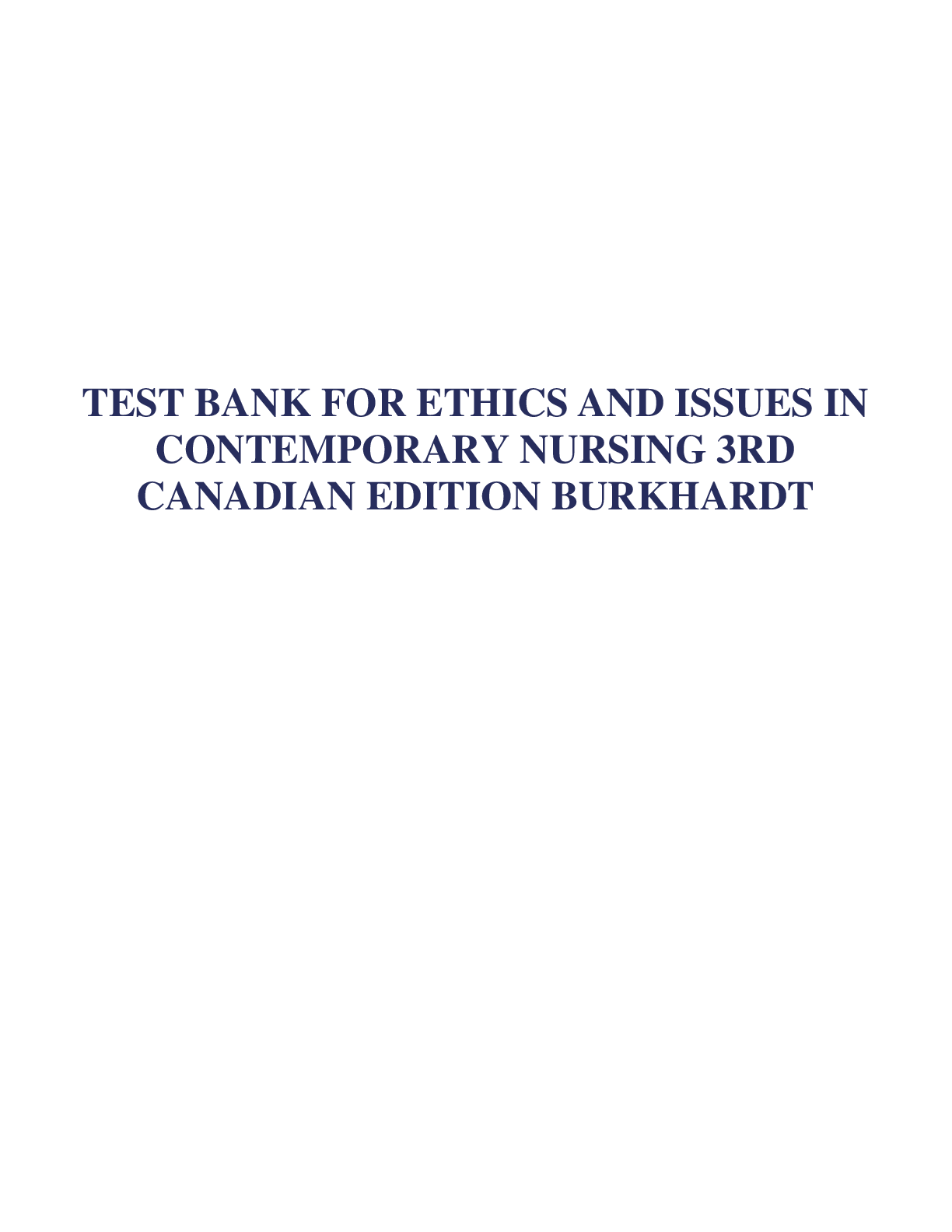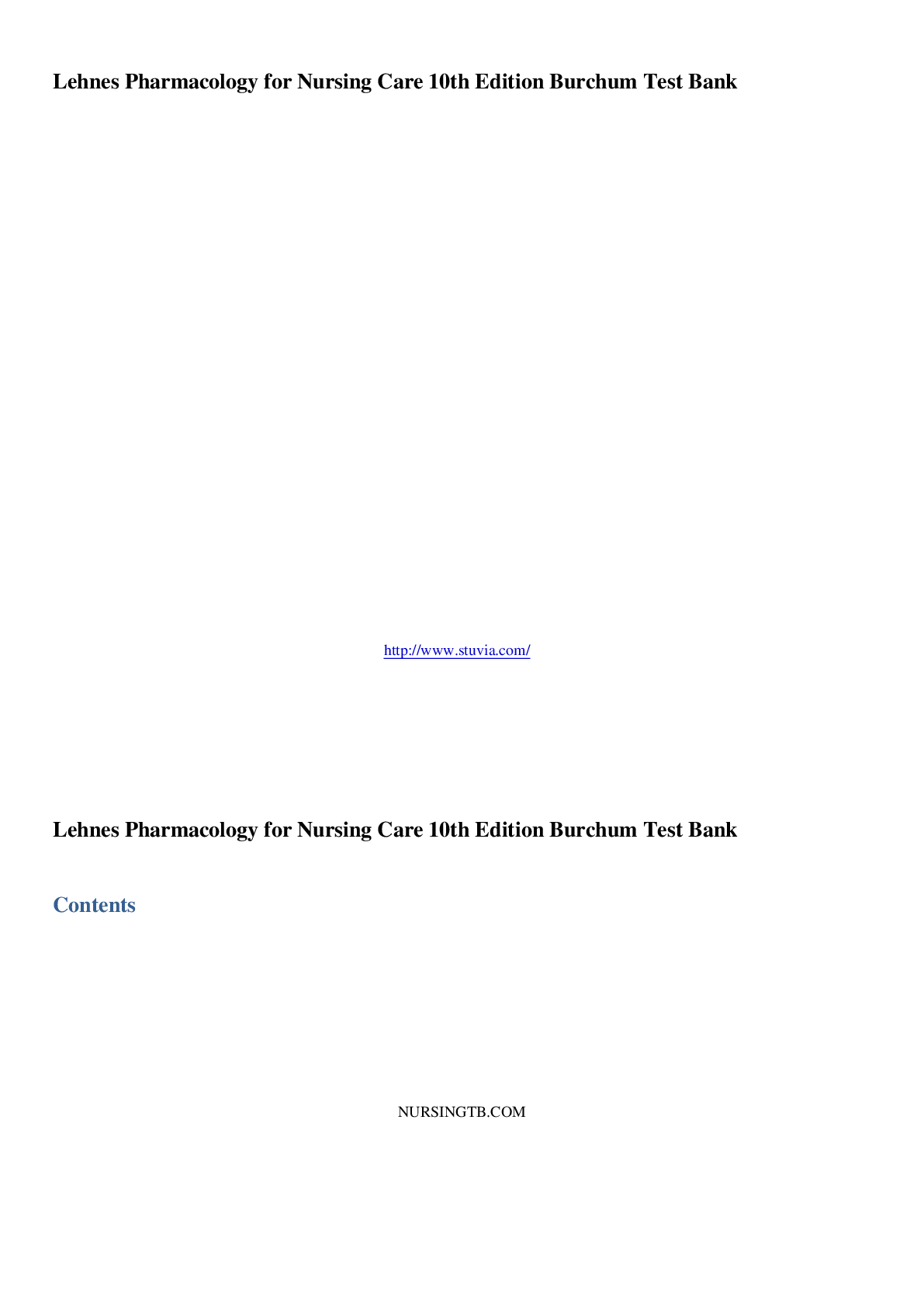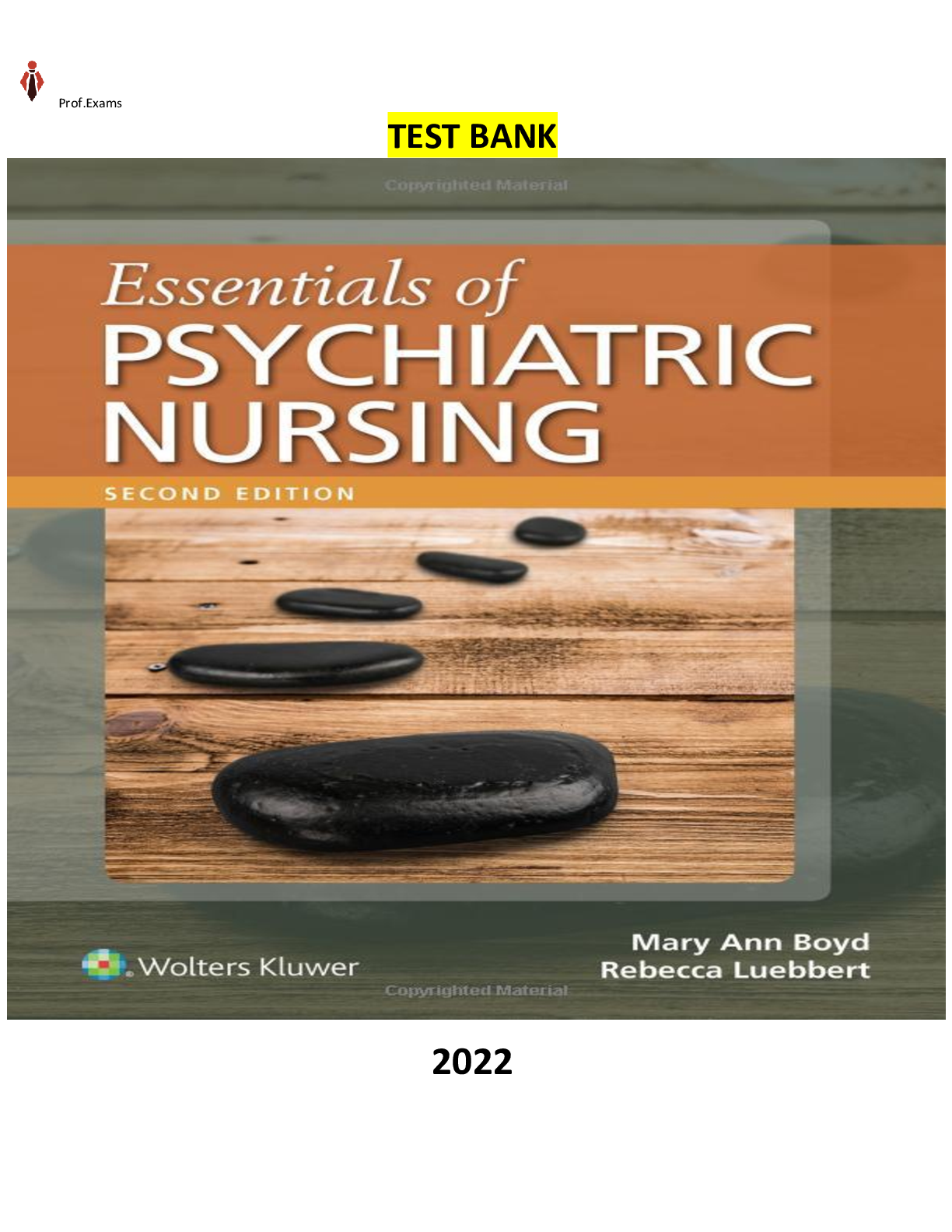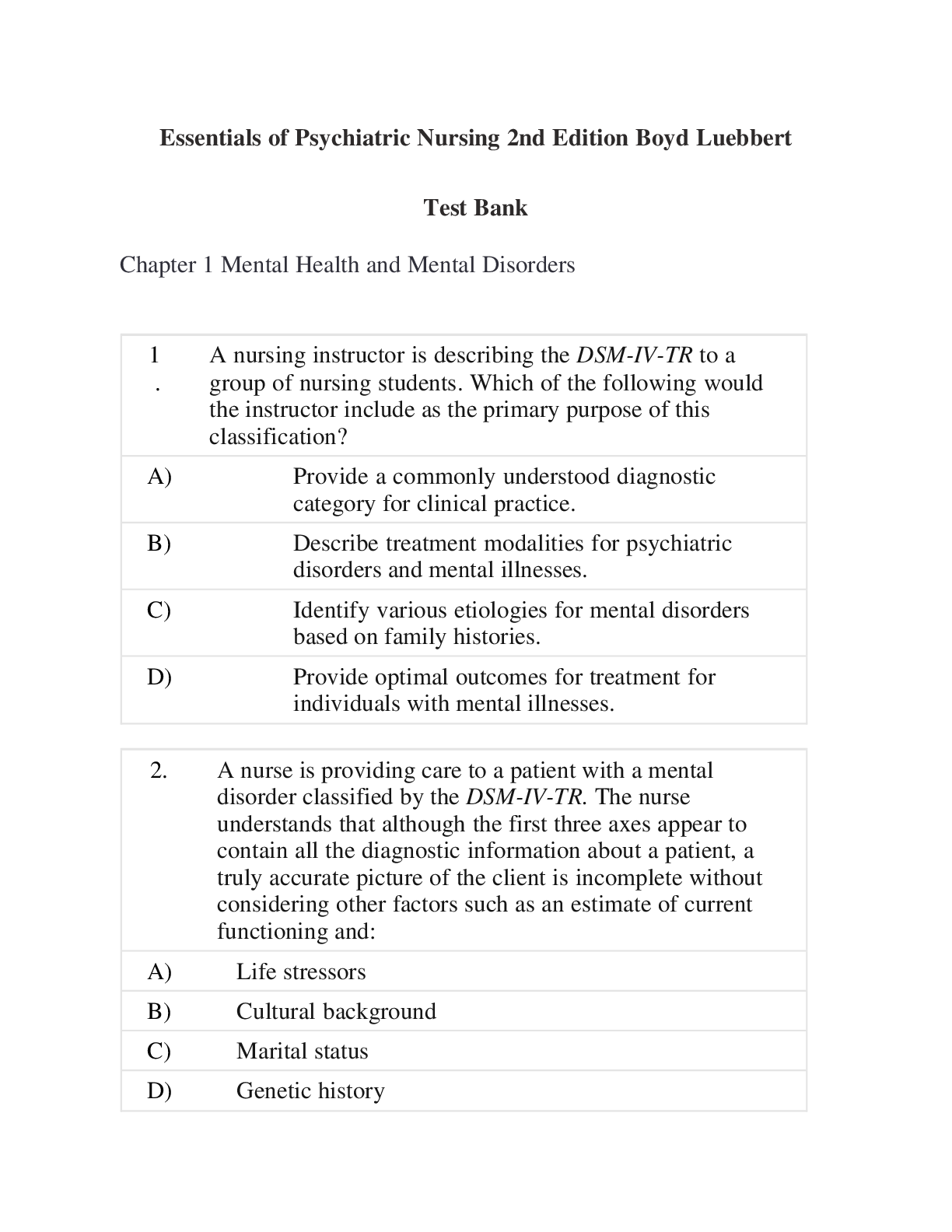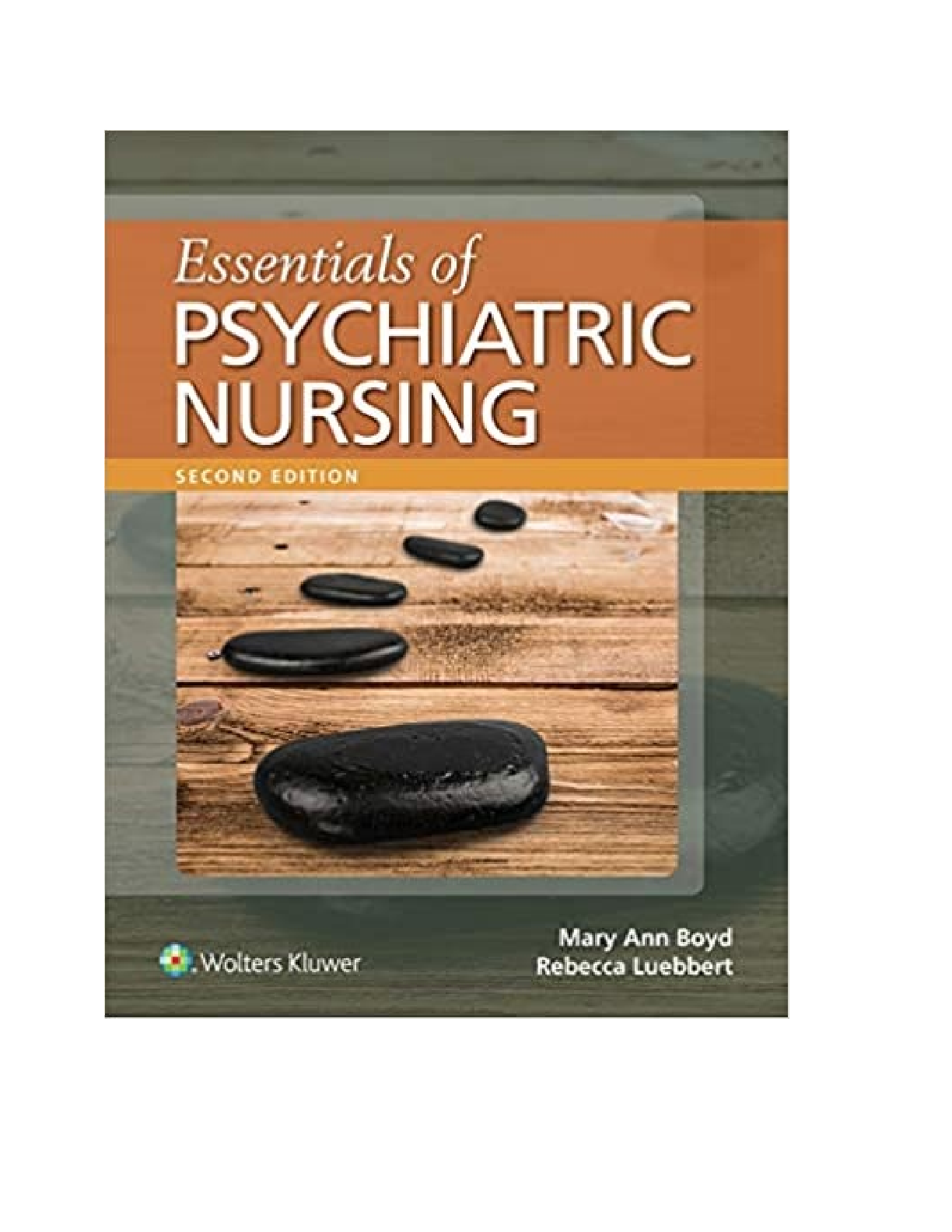*NURSING > TEST BANK > Essentials of Psychiatric Nursing 2nd Edition Boyd Test Bank ISBN: 9781975139810 (All)
Essentials of Psychiatric Nursing 2nd Edition Boyd Test Bank ISBN: 9781975139810
Document Content and Description Below
Essentials of Psychiatric Nursing 2nd Edition Boyd Test Bank Instant delivery (Printed PDF) To clarify, this is not a TEXTBOOK! This is a Test Bank (Study Questions) to help you better prepare for you... r exams. Test Bank Directly From The publisher, 100% Verified Answers. COVERS ALL CHAPTERS. Download Immediately After the Order. ISBN: 9810 Test Generator Questions, Chapter 1, Mental Health and Mental Disorders Multiple Choice 1. As part of a class activity, nursing students are engaged in a small group discussion about the epidemiology of mental illness. Which statement best explains the importance of epidemiology in understanding the impact of mental disorders? Epidemiology: A) Helps promote understanding of the patterns of occurrence associated with mental disorders. B) Helps explain research findings about the neurophysiology that causes mental disorders. C) Provides a thorough theoretical explanation of why specific mental disorders occur. D) Predicts when a specific psychiatric client will recover from a specific mental disorder. Ans: A Chapter: 1 Client Needs: Safe, Effective Cognitive Level: Apply Integrated Process: Teaching/Learning Objective: 4 Page Number: 2 Feedback: Epidemiology is the study of patterns of disease distribution and determinants of health within populations. It contributes to the overall understanding of the mental health status of population groups, or aggregates, and it examines the associations among possible factors. Epidemiology does not explain research findings about neurophysiology, provide theoretical explanations for why specific disorders occur, or predict recovery. 2. A nurse is working in a community mental health center that provides care to a large population of people of Asian descent. When developing programs for this community, which of the following would be most important for the nurse to address? A) Public stigma B) Self-stigma C) Label avoidance D) Negative life events Ans: C Chapter: 1 Client Needs: Psychosocial Integrity Cognitive Level: Understand Integrated Process: Nursing Process Objective: 5 Page Number: 4 Feedback: Although public stigma and self-stigma may be areas needing to be addressed, in this cultural group, label avoidance would be most important. Label avoidance or avoiding treatment/care so as not to be labeled mentally ill is a type of stigma that influences why so few people with mental health problems actually receive assistance. Asian cultures commonly have negative views of mental illness that influence the willingness of members to seek treatment; they possibly ignore the symptoms or refuse to seek treatment because of this stigma. Negative life events affect anyone, not just those of the Asian culture. 3. A nursing student is assigned to care for a client diagnosed with schizophrenia. When talking about this client in a clinical post-conference, the student would use which terminology when referring to the client? A) Committed client B) Schizophrenic C) Schizophrenic client D) Person with schizophrenia lOMoAR cPSD|11700591 Ans: D Chapter: 1 Client Needs: Psychosocial Integrity Cognitive Level: Apply Objective: 5 Page Number: 4 Feedback: Just as a person with diabetes should not be referred to as a <diabetic= but rather as a <person with diabetes,= a person with a mental disorder should never be referred to as a <schizophrenic= or <bipolar,= but rather as a <person with schizophrenia= or a <person with bipolar disorder.= Doing so helps to counteract the negative effects of stigma. 4. A nursing student is reviewing journal articles about major depression. One of the articles describes the number of persons newly diagnosed with the disorder during the past year. The student interprets this as which of the following? A) Rate B) Prevalence C) Point prevalence D) Incidence Ans: D Chapter: 1 Client Needs: Psychosocial Integrity Cognitive Level: Apply Integrated Process: Nursing Process Objective: 4 Page Number: 3 Feedback: The article is describing incidence, which refers to a rate that includes only new cases that have occurred within a clearly defined time period. The most common time period evaluated is 1 year. Rate reflects the proportion of cases in the population compared with the total population. Prevalence refers to the total number of people with the disorder within a given population at a specified time, regardless of how long ago the disorder started. Point prevalence refers to the proportion of individuals in the population that have a disorder at a specific point in time [Show More]
Last updated: 2 years ago
Preview 1 out of 554 pages
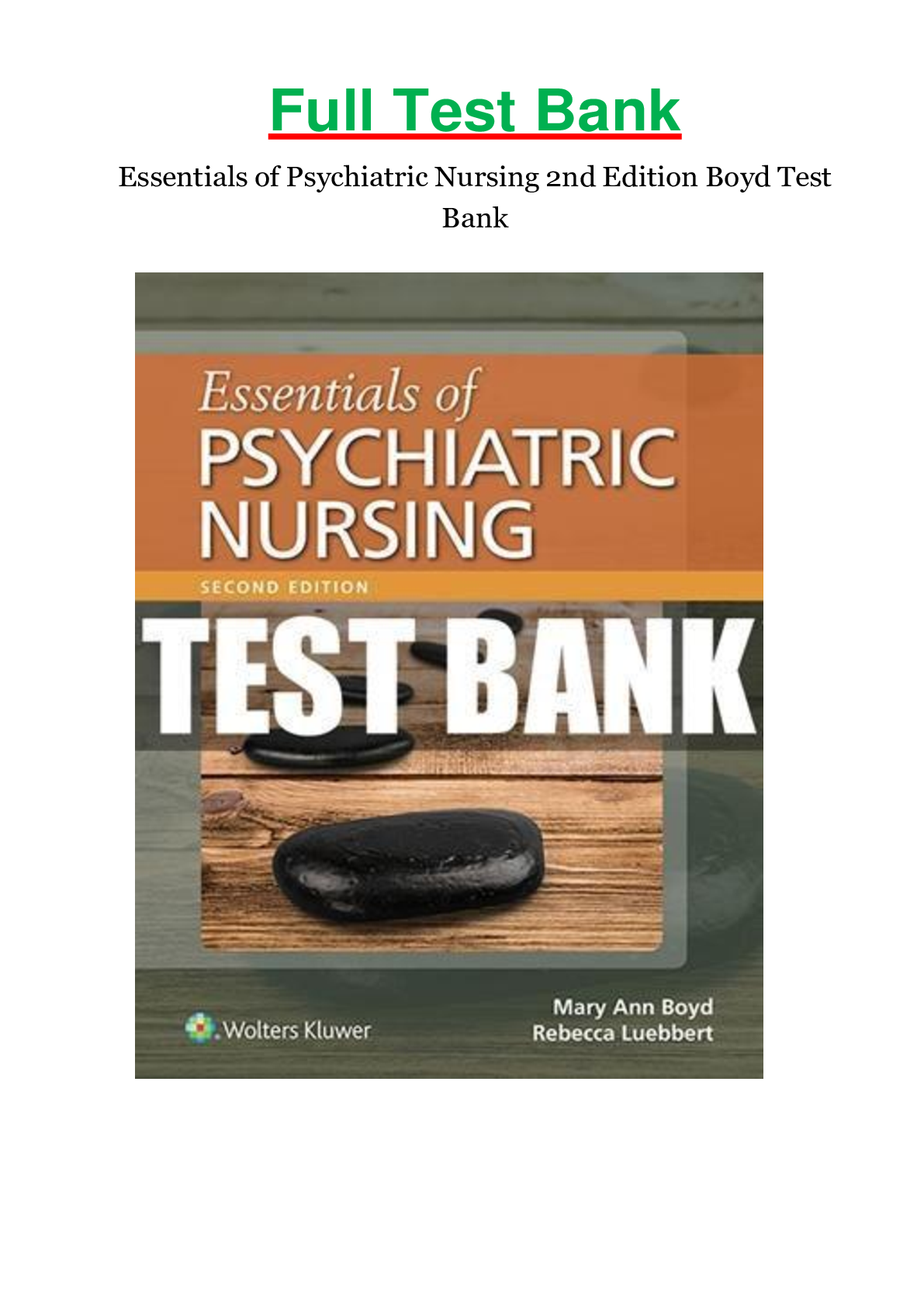
Buy this document to get the full access instantly
Instant Download Access after purchase
Buy NowInstant download
We Accept:

Reviews( 0 )
$15.00
Can't find what you want? Try our AI powered Search
Document information
Connected school, study & course
About the document
Uploaded On
Oct 13, 2022
Number of pages
554
Written in
Additional information
This document has been written for:
Uploaded
Oct 13, 2022
Downloads
0
Views
98

